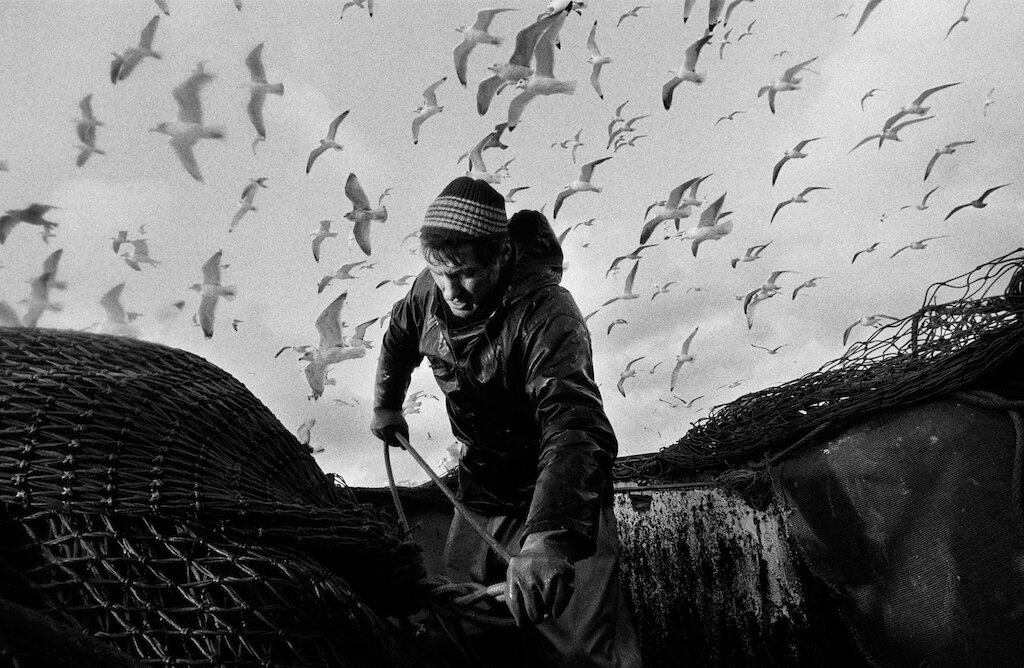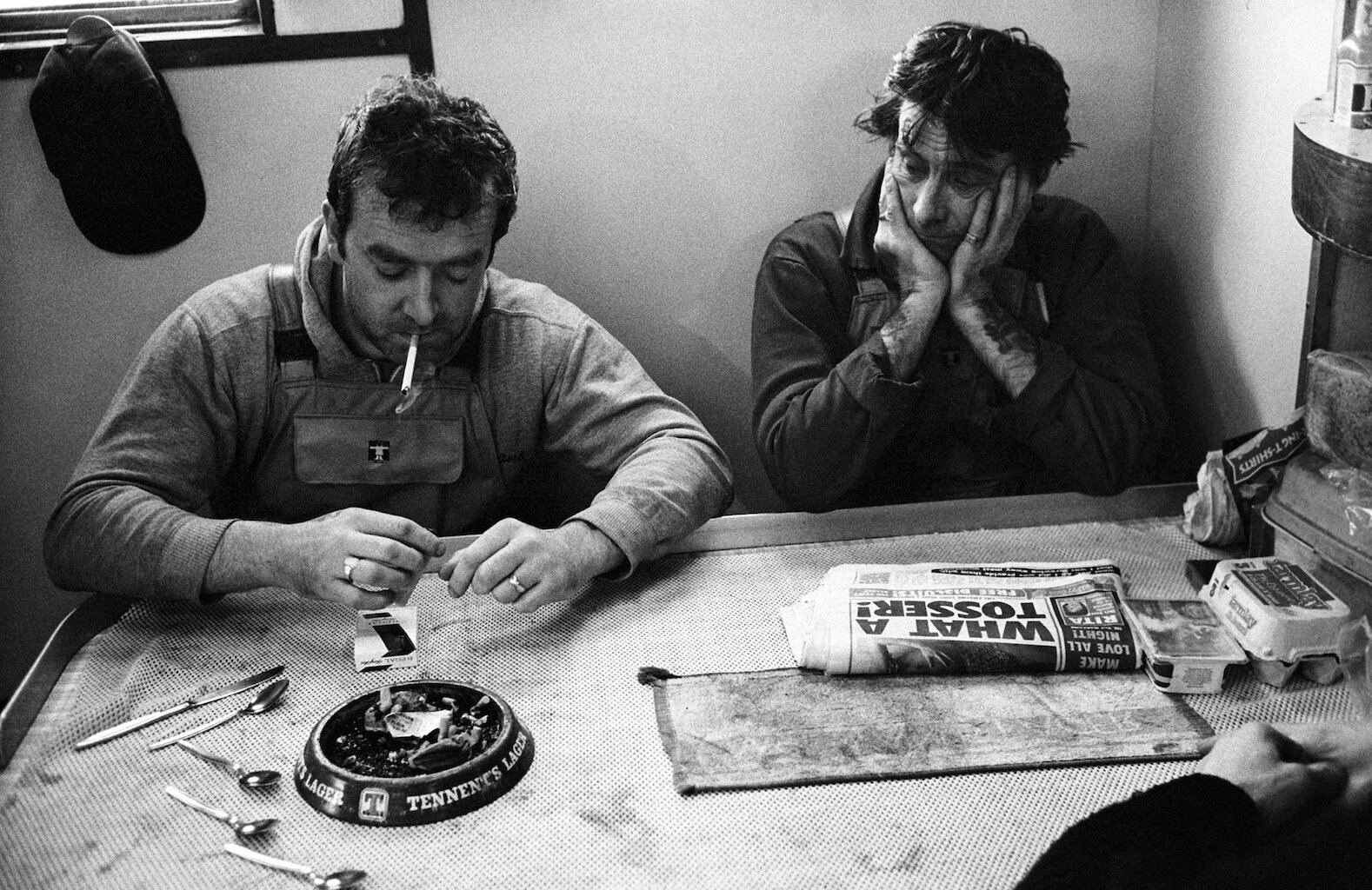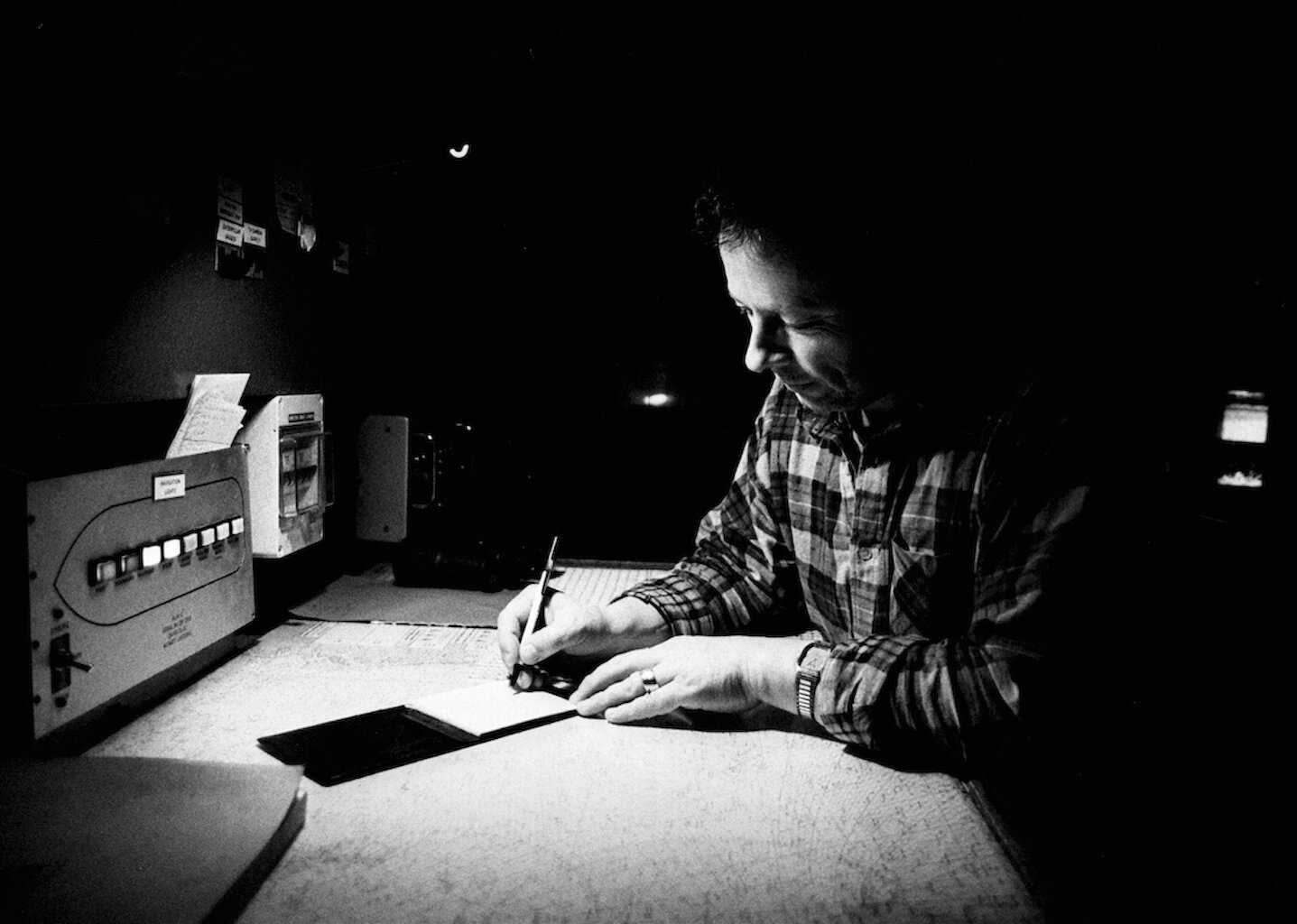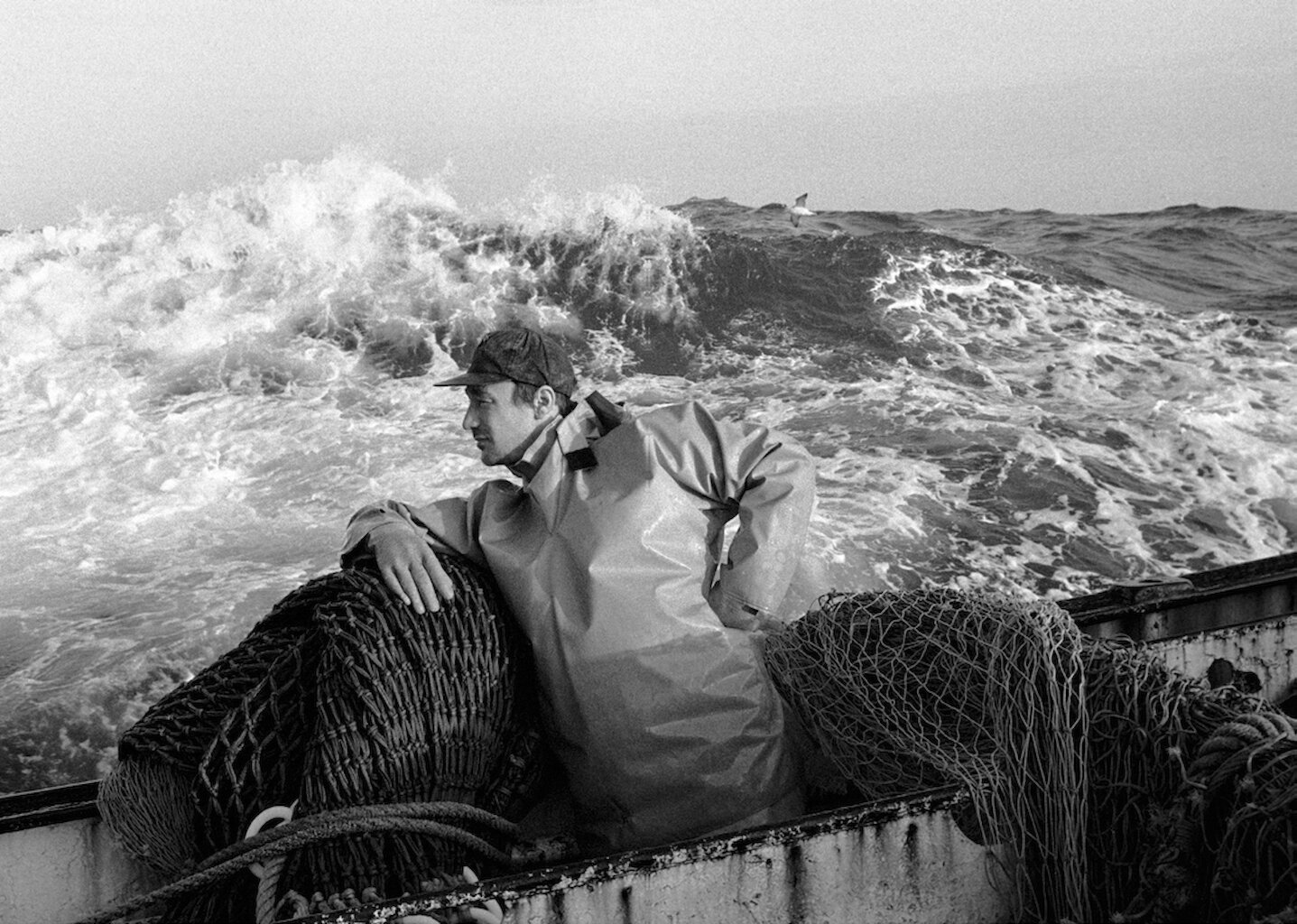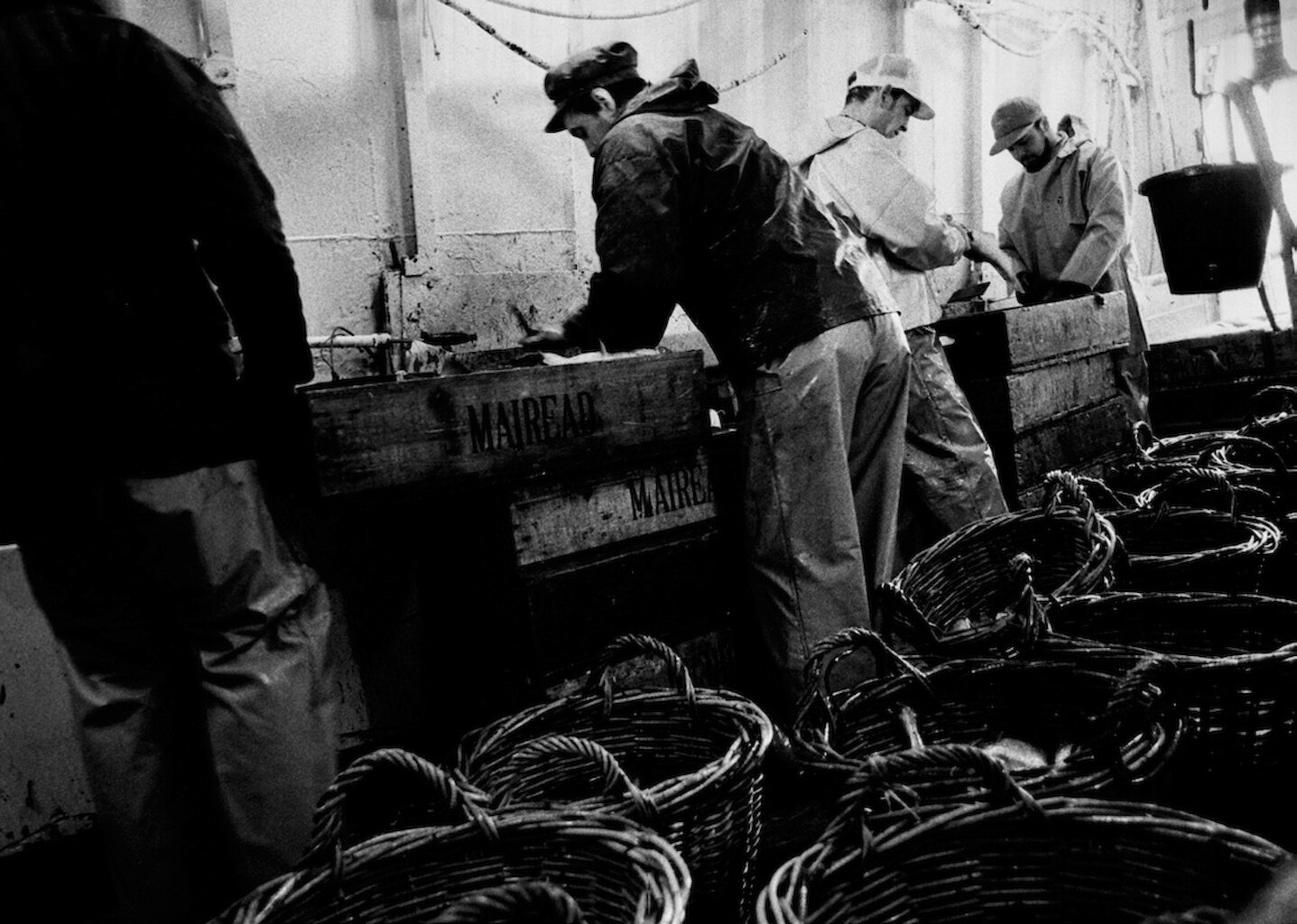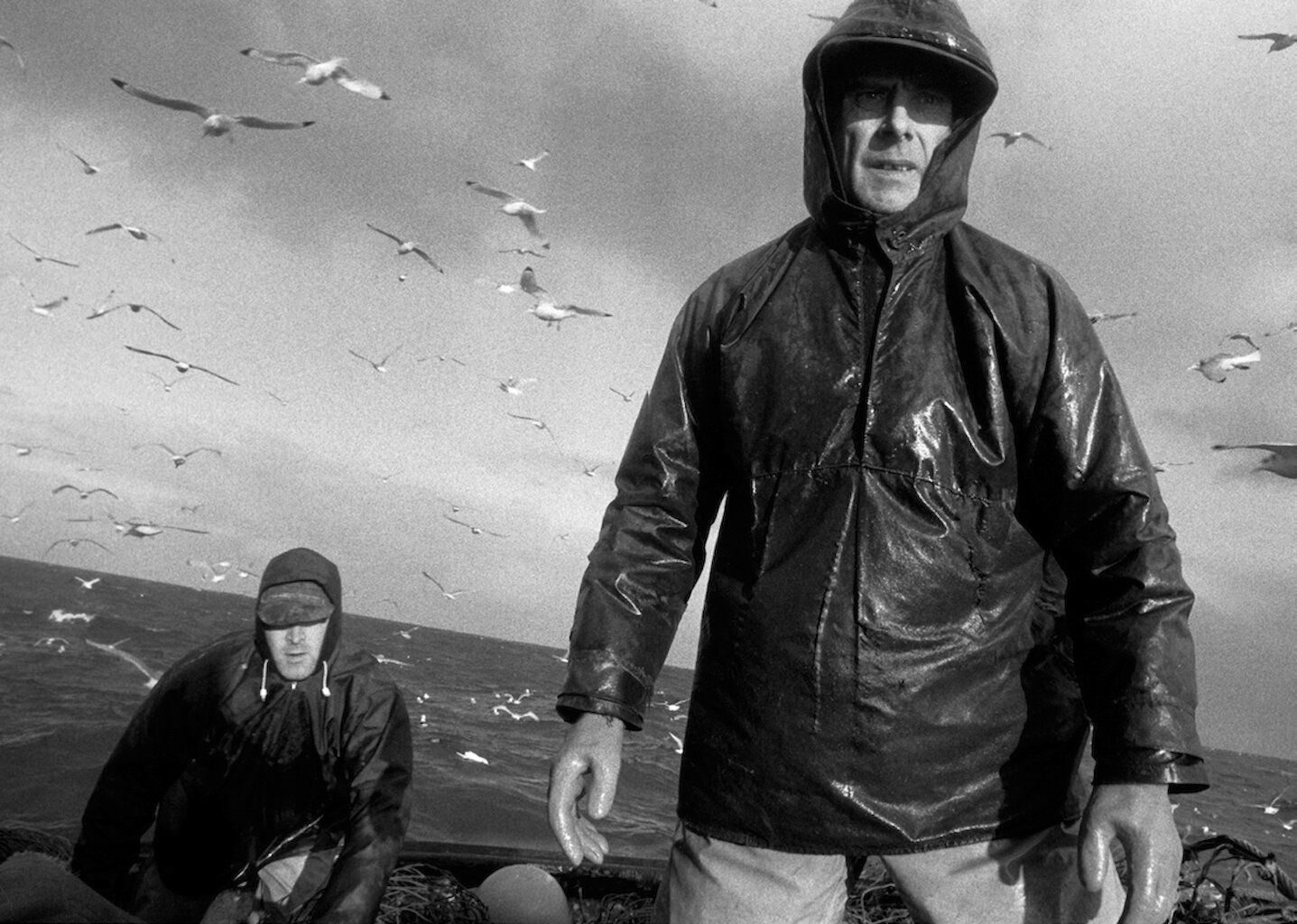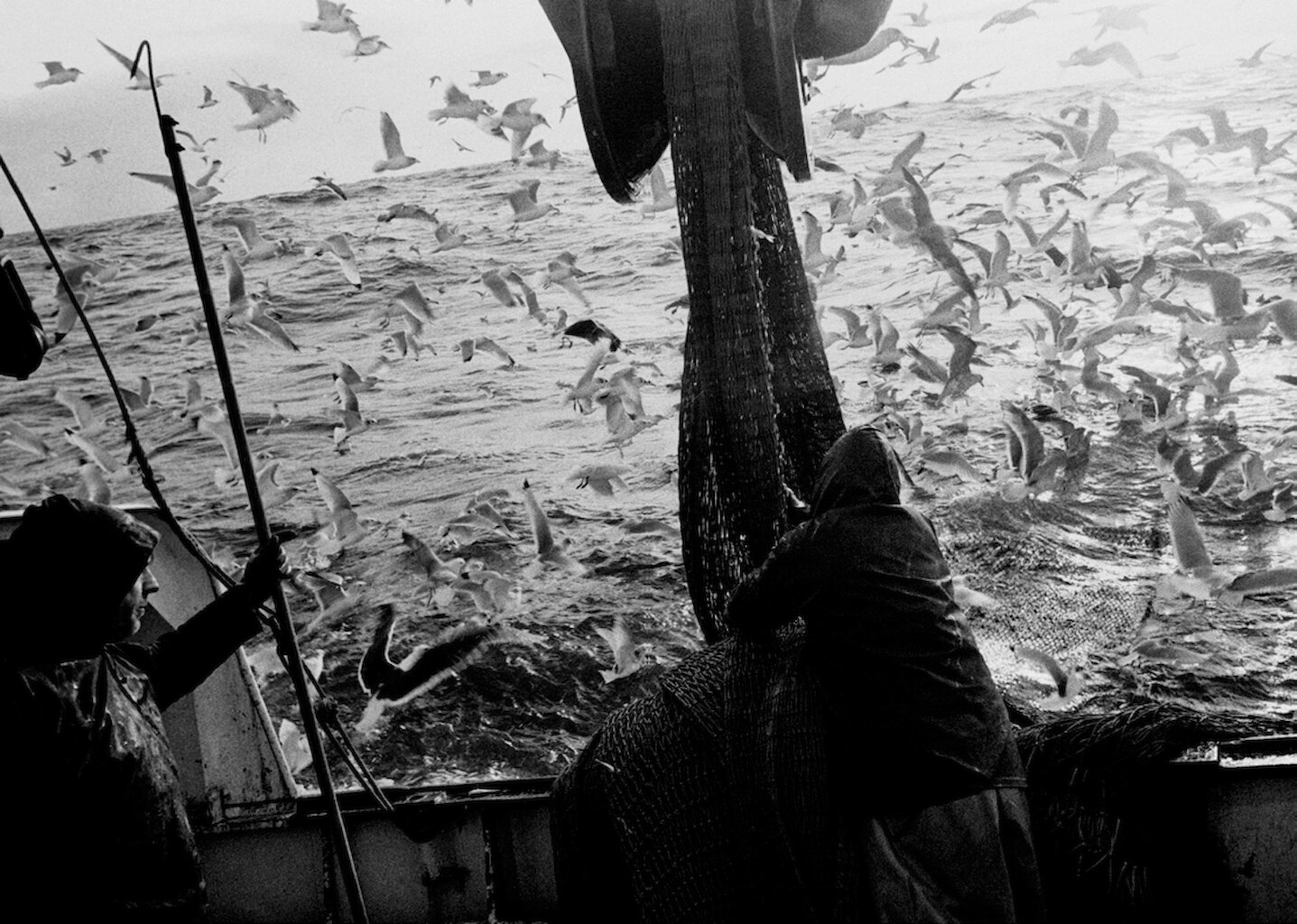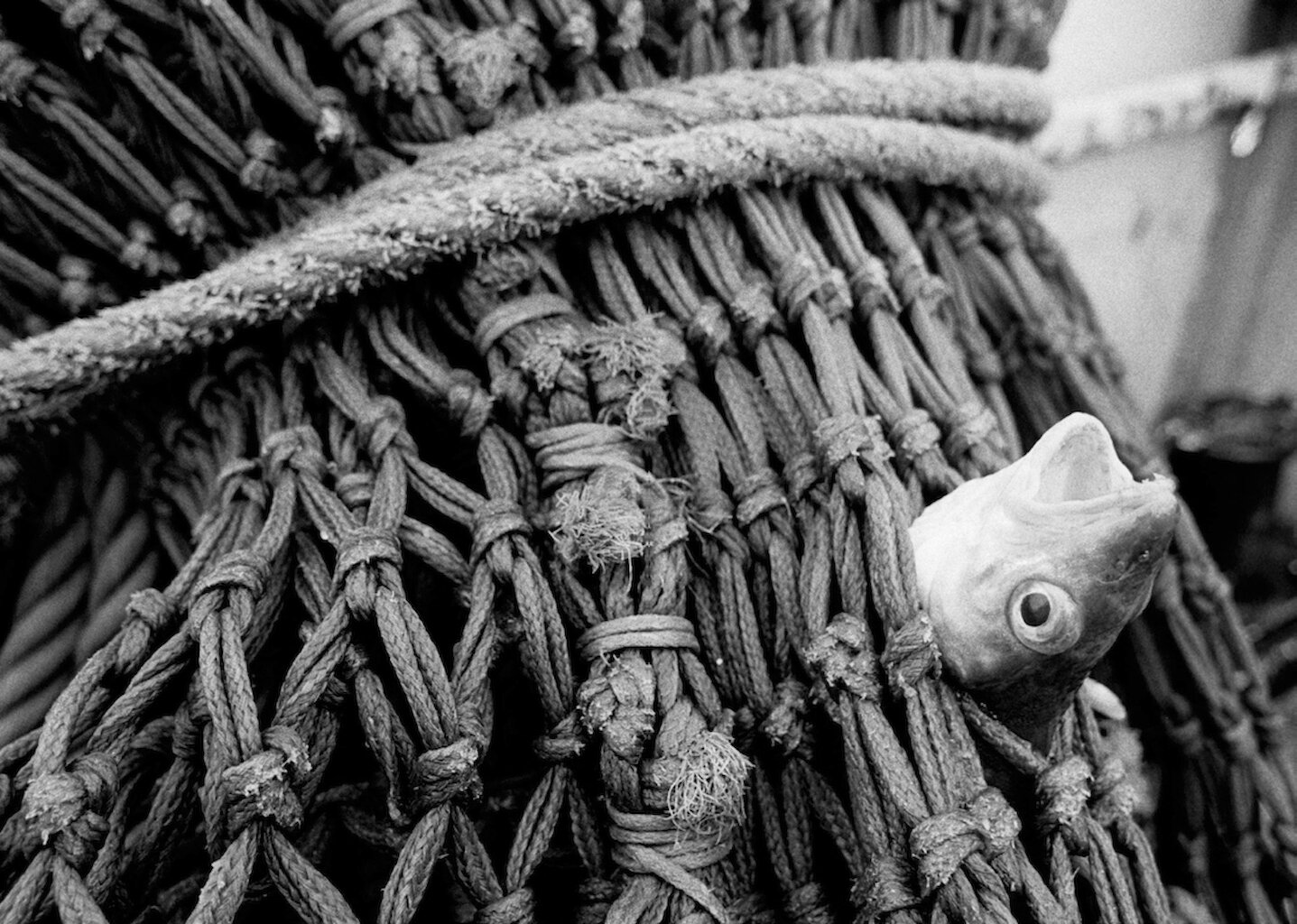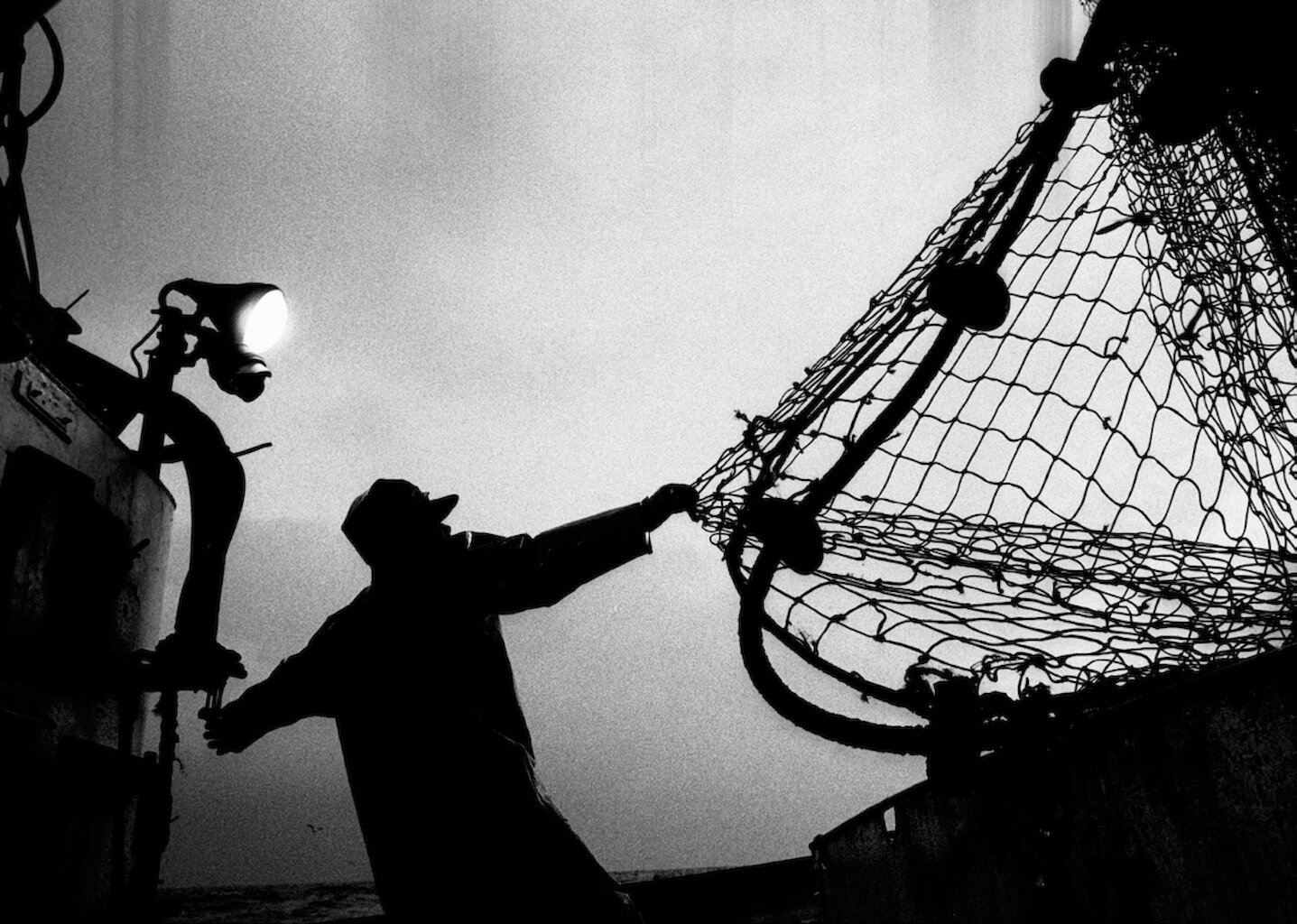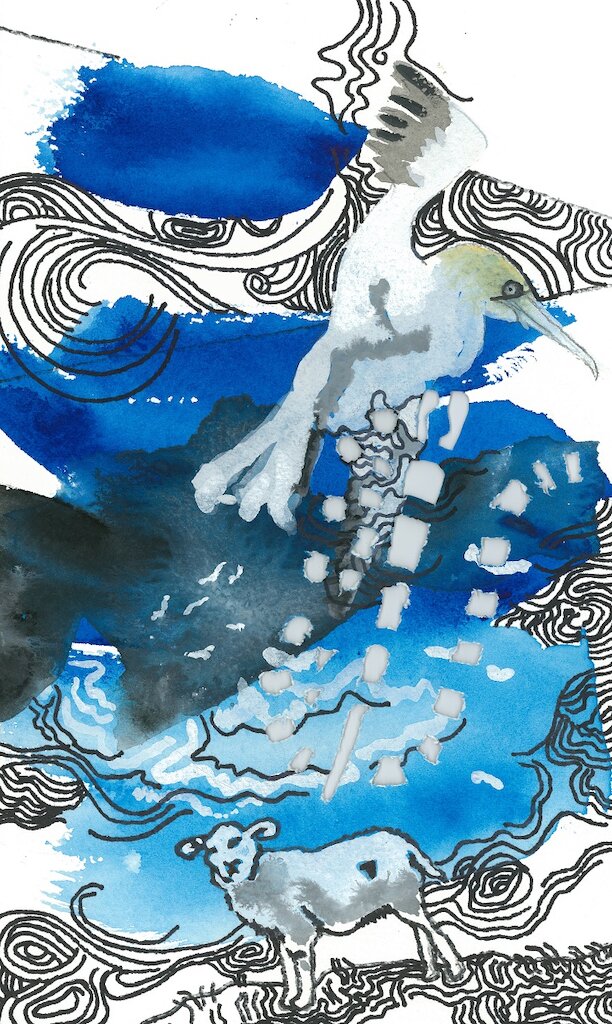Scottish documentary photographer Jeremy Sutton-Hibbert captured the reality of the life at sea for the fishermen of Scotland's North East fishing communities aboard the seine net fishing boats, Mairead and Argosy, in the North Sea in the 1990s.
These images serve as an important record of a period and style of fishing which is already passing into history, an insight into the working conditions for seine net fishermen, operating far from the safety and comforts of the shore. They capture the cramped conditions, monotony, and the grueling work in harsh conditions.
The North Sea – "a confused sea" as it was once described to me and, as one fishing trawler skipper told me, late at night, only the instrument panel lighting the bridge room, "the north sea, she's a cruel mistress".
With thanks to Ronnie Hughes and the crew of the Mairead, and Duncan Mackenzie and the crew of the Argosy, for their hospitality and generosity. All photographs shot in 1993 on the Mairead, and 1995 on the Argosy.
This is a touring exhibition hosted by the Scottish Fisheries Museum in Anstruther. The production has been made possible thanks to the generous sponsorship of several organisations including Street Level Photoworks in Glasgow, Scottish Fishermen's Trust, Scottish Fishermen's Organisation and Loxley Colour Photo Lab.
North Sea Fishing will be complemented by Jeremy Sutton-Hibbert's photographs of the Russian, Polish and East German klondykers (fish factory ships) working in Shetland during the early 1990s, on the Long Wall in the upper cafe bar at Mareel.
